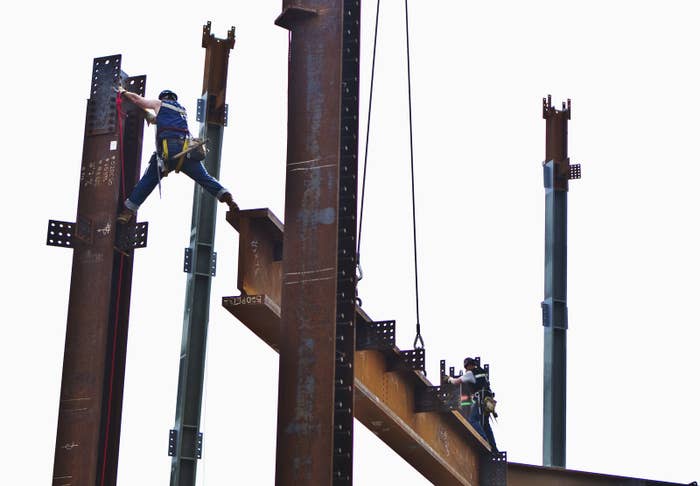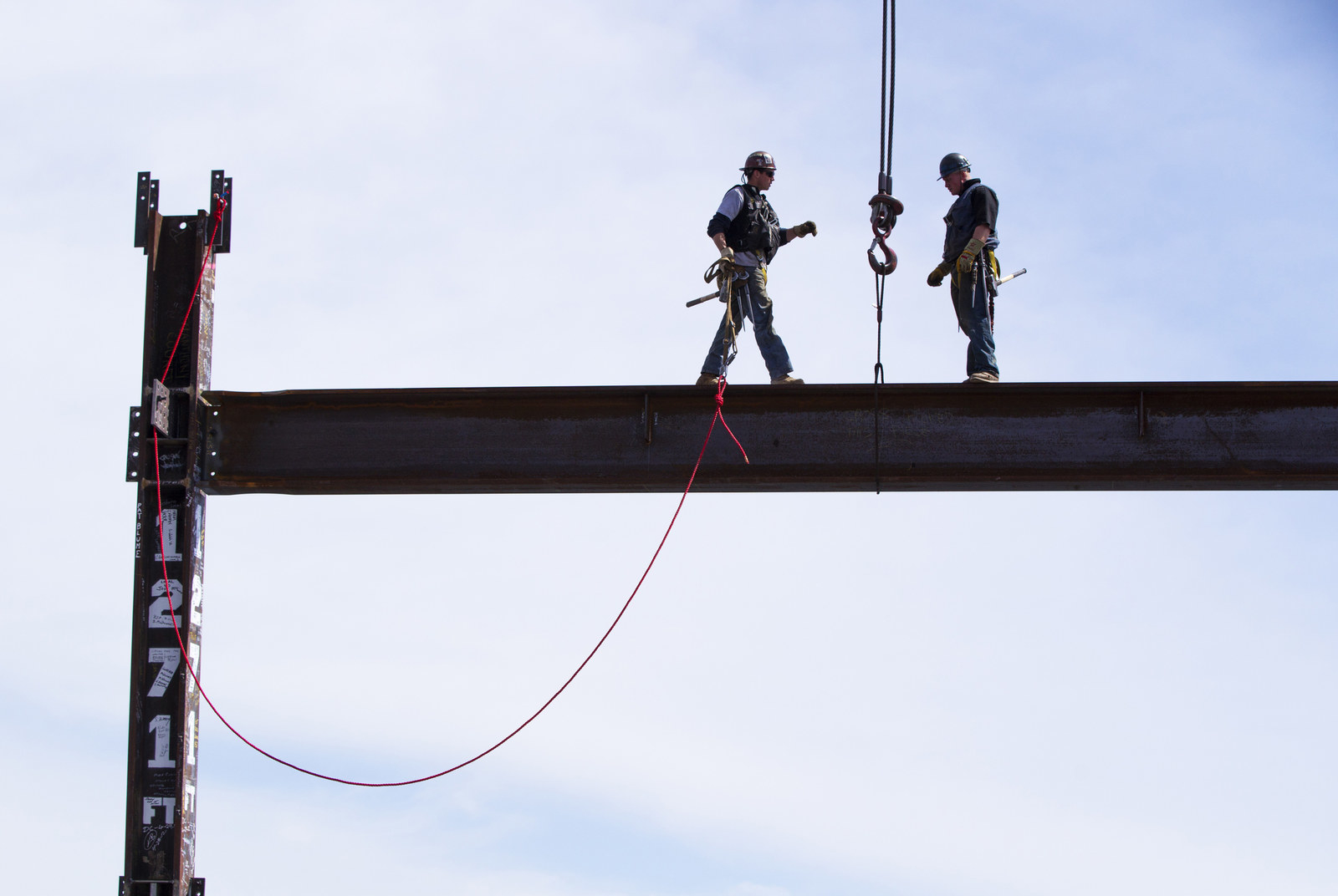
The membership of the 130,000-strong Ironworkers union is an overwhelmingly male crowd, but the approximately 2,100 women members just won a benefit that would be prized by working women across the country: Six months of paid maternity leave.
The leave, designed to be taken prior to delivery, complements six to eight weeks of post-delivery leave.
"The challenges of physical work associated with the ironworking trade create unique health challenges that can jeopardize a pregnancy," the union said in a statement announcing the benefit, noting that paid maternity leave "is virtually unheard of in the building trades."
The numbers put maternity leave for iron-working women on par with corporate employees at tech companies like Etsy, Adobe, Spotify and Cisco. Netflix and the Bill and Melinda Gates Foundation are among the only companies that offer workers more paid parental leave, according to data gathered by Care@Work, which specializes in family benefits.
Bill Brown, CEO of Ben Hur Construction Co., called the benefit "an investment, because we want our well-trained ironworker women to come back to work."

Using back-of-the-envelope calculations, Brown estimated that training a new ironworker costs $32,000 over the course of a four-year apprenticeship, during which time the workers are also paid regular salaries.
"So when you add payroll to 32K a year, and you lose a woman worker, you're out more than 32K," he said. "Then you have to train another person to take their place, so it's a 64K proposition if you lose one female apprentice.
"To protect our investment, if we wanted women to stay in our industry, we had to do something."
Brown acts as co-chair of the Iron Workers labor-management working group, which came up with the plan for six months of paid leave along with Iron Workers General President Eric Dean.
Dean said he believes the benefit is the first of its kind in the building industry, but that he hopes it will be a model for others. The working group began talking about maternity benefits when looking into why such a high number of women were leaving the workforce for other professions.
"We’ve always had women, but never had an abundance of women," Dean said. "And many of them were leaving the industry after we spent an inordinate amount of time training them."

While attending an industry conference focused on women in the profession, Dean heard a woman recount her decision to continue showing up to a job-site months into her pregnancy — "because if you don't stay at the job-site, you don't get a check, and if you don't get a check, you don't get coverage," she said.
Despite keeping her healthcare coverage, the woman had a miscarriage. "It was a heartfelt moment in the room," Dean recalled. "Everyone's stomach dropped, like someone had gut-punched you."
But the motivation for providing leave wasn't only medical. Both public and private employers "are insisting that the workforce on the construction site replicate the workforce in the community," Brown said. "And so we needed a more diverse workforce to satisfy new hiring requirements for minorities, women, and veterans."
Contractors who fail to hire a certain percentage of women could sometimes face financial penalties, adding further incentive to the union and contractors' agreement.
"It's socially the right thing to do," he said, "but it's not a bad business proposition either."
